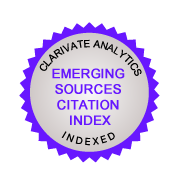Bilingual Test as a Test Accommodation to Determine the Mathematics Achievement of Mainstream Students With Limited English Proficiency
Keywords:
Computation testlet, word problem testlet, LEP, bilingual test, English-only test, mathematics achievementAbstract
Purpose – This study aims to investigate the validity of using bilingual test to measure the mathematics achievement of students who have limited English proficiency (LEP). The bilingual test and the English-only test consist of 20 computation and 20 word problem multiple-choice questions (from TIMSS 2003 and 2007 released items. The bilingual test consists of items in Malay and English languages. The English teachers classified their students into LEP and non-LEP groups. Methodology – A total of 2,021 LEP and 2,747 non-LEP students from 34 schools were identified. Spiral administration was employed. A total of 2,399 students sat for the bilingual test and 2,369 for the English-only test. The scores were linked using RAGE-RGEQUATE version 3.22. Findings – Findings revealed that in the word problem testlet, the bilingual test was one unit easier for LEP students, probably indicating that the Malay language adaptation assisted them. For the non-LEP students, the bilingual version did not provide any added advantage to them as they did not show elevated achievement score. Significance – This study indicates bilingual test can be an appropriate test accommodation that validly measures both LEP and non-LEP students’ mathematics achievement in countries where English is not the native language but is used as the instructional language.Additional Files
Published
26-12-2013
How to Cite
Shanmugam, S. K. S., & Lan, O. S. (2013). Bilingual Test as a Test Accommodation to Determine the Mathematics Achievement of Mainstream Students With Limited English Proficiency. Malaysian Journal of Learning and Instruction, 10, 29–55. Retrieved from https://e-journal.uum.edu.my/index.php/mjli/article/view/7650
Issue
Section
Articles
























